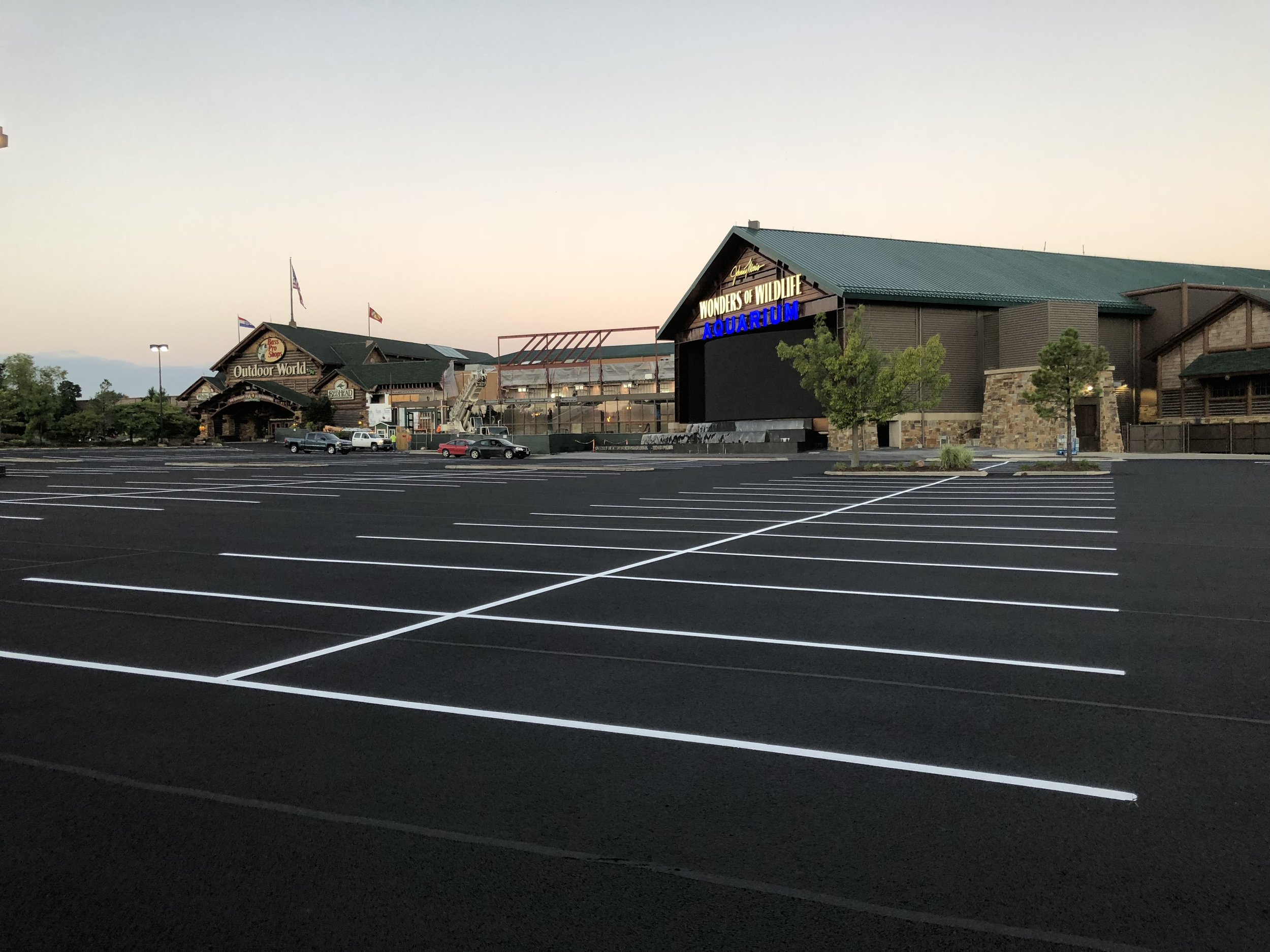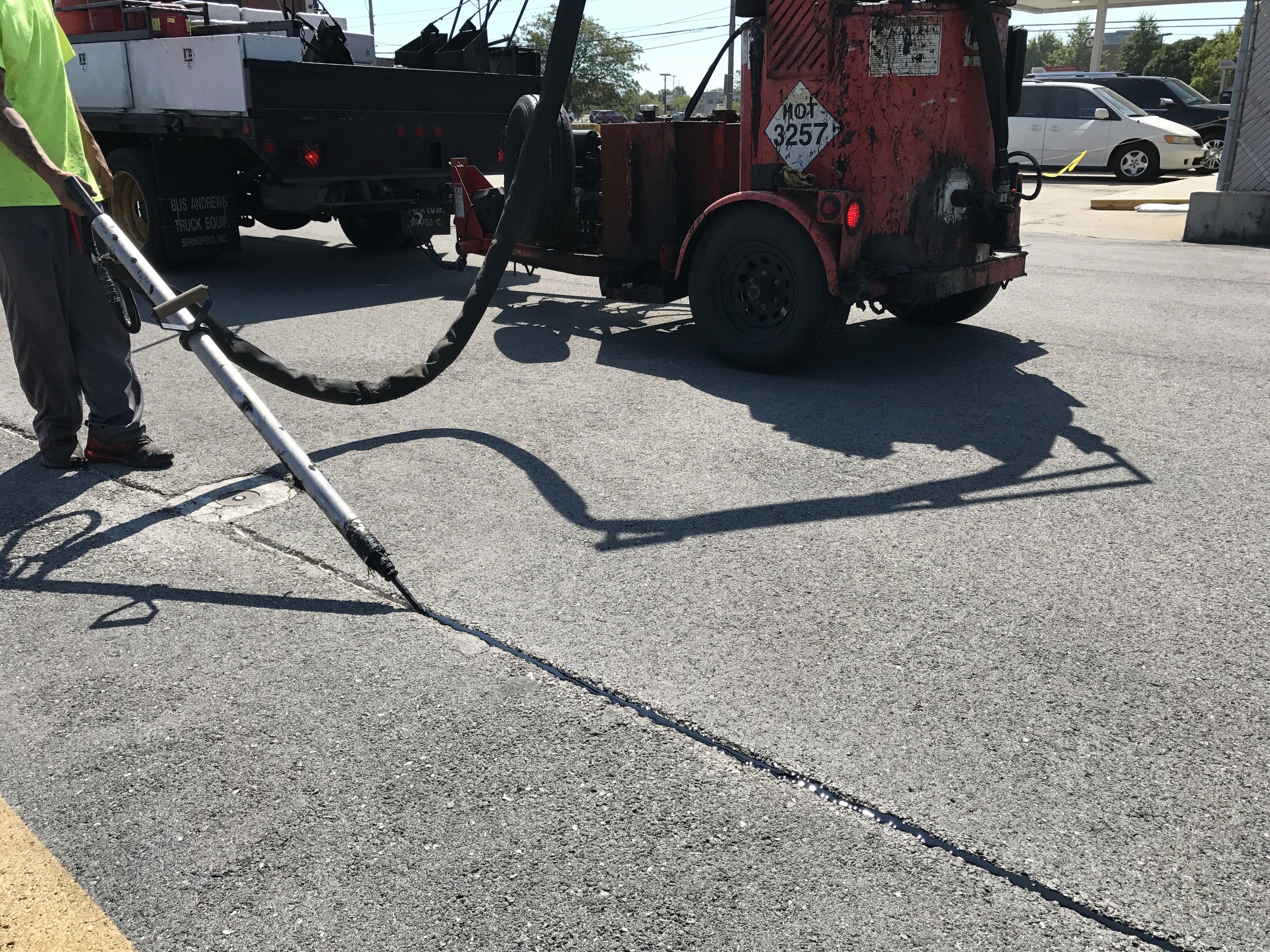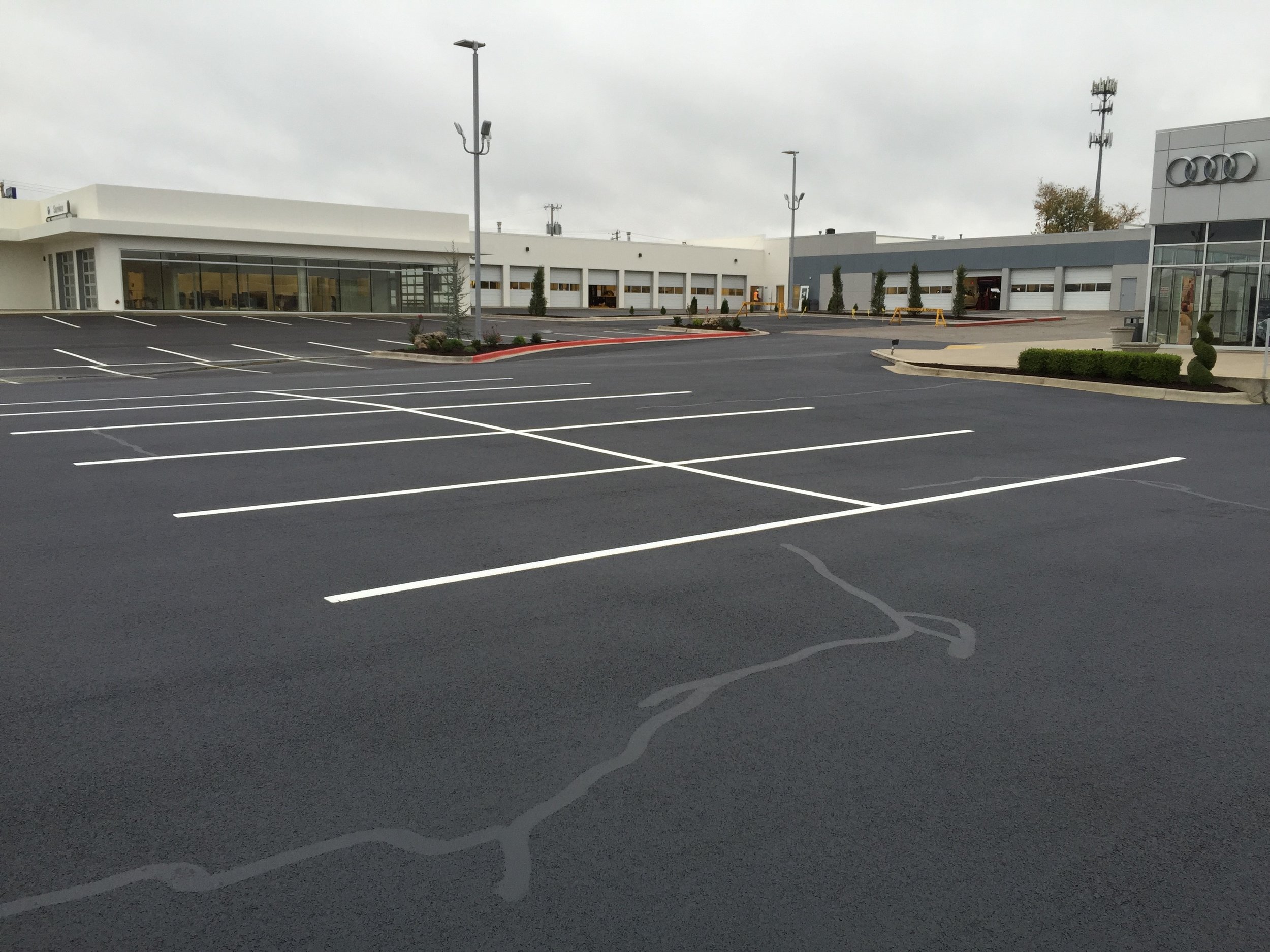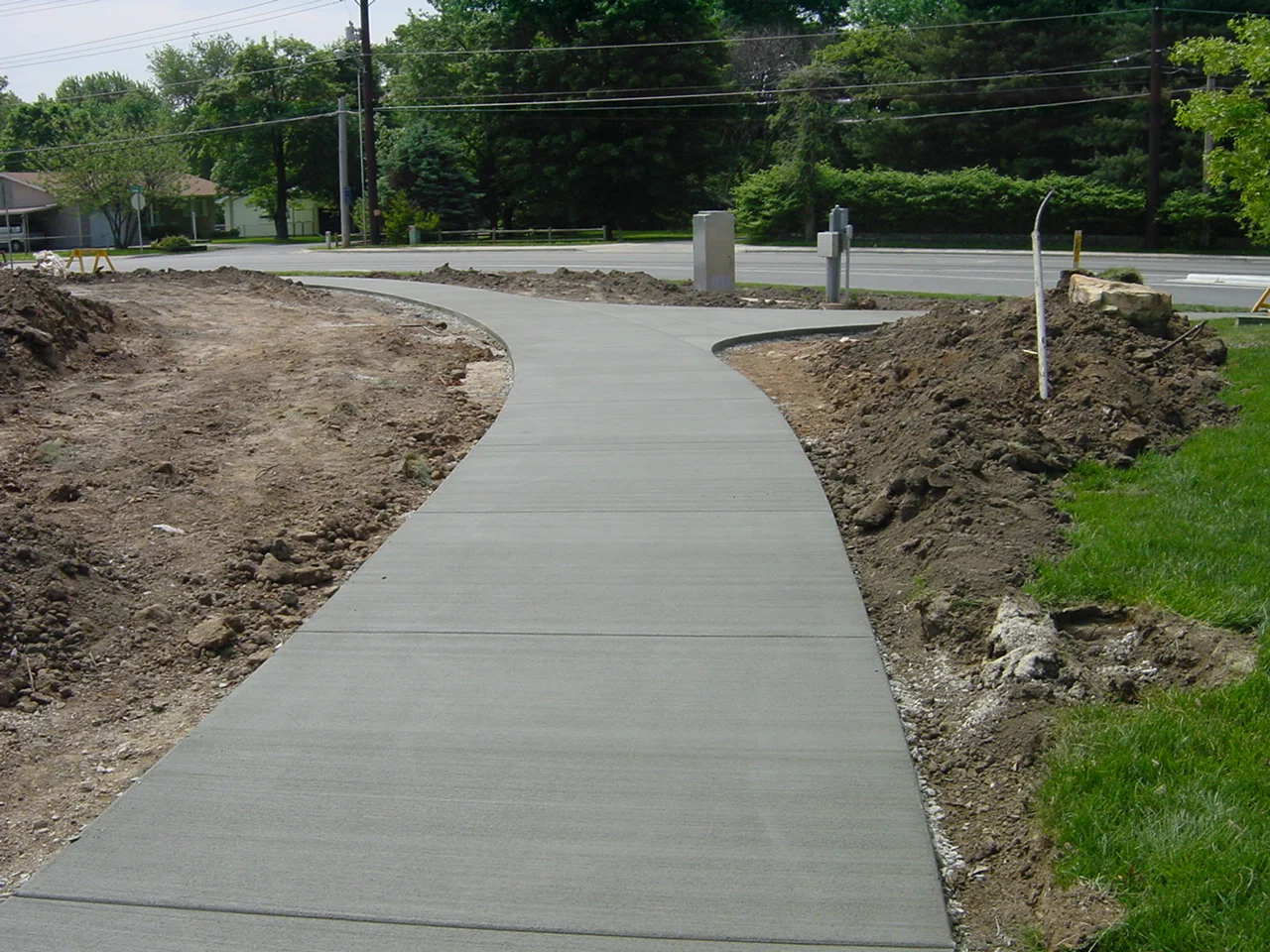Crack Sealing & Seal Coating
Asphalt Seal Coating
Springfield Striping & Sealing is Southwest Missouri's Premier Seal Coating Contractor. Our highly trained crews and state of the art application equipment will assure that your project is completed in a timely and professional manner. Springfield Striping & Sealing offers customers both Coal Tar Pavement Sealer and Asphalt Emulsion Pavement Sealer. We use only the highest quality seal coat material fortified with sand for a non-skid surface and latex additive, which provides a deep black color and enhanced fuel resistance.
Sunlight causes an asphalt surface to "dry out" through oxidation and become brittle. Seal coating will keep the sun from drying out the asphalt and will retain the vital asphalt binder needed for a long surface life.
Asphalt is a porous surface which allows water to pass through it causing the subsurface to soften and fail. Seal coating fills the asphalt pores which keeps water on the surface. As a result, the sub-base remains stable reducing the potential of asphalt failure.
Petroleum spills (vehicle oil leaks) soften the asphalt and causes failure. Seal coating will protect the asphalt from oil intrusion, which reduces costly asphalt repairs.
Provides a deep black, attractive appearance inviting your customers to your facility.
Hot Rubberized Crack Sealing
Crack sealing your parking area on a yearly basis is the most cost effective way to reduce costly asphalt repairs. Springfield Striping & Sealing uses only the highest grade hot rubberized crack sealing material exceeding federal specifications. Our material will not track in any situation.
Prevents water intrusion - The number one cause of asphalt failure.
Most cost effective way to protect your asphalt investment.
This highly elastic material remains flexible to temperatures of 20 below zero.
Protect your asphalt investment - contact us for a quote on sealing your asphalt pavement.
Before & After
Services
FAQs for Crack Sealing and Seal Coating
-
Crack sealing involves filling cracks in asphalt with a hot rubberized material to prevent water intrusion, while seal coating adds a protective top layer to shield the asphalt from sun, water, and oil damage. Crack sealing targets specific problem areas, while seal coating protects the entire surface.
-
Crack sealing is important because it prevents water from seeping into the pavement, which is the leading cause of asphalt damage. When water penetrates through cracks, it can reach the subgrade, causing it to weaken and lose its stability. This leads to further deterioration of the pavement, including potholes and alligator cracking. Sealing cracks early not only protects the subgrade but also reduces the need for expensive repairs and significantly extends the lifespan of the pavement.
-
Seal coating protects asphalt from UV rays, water, and oil spills, while also giving it a fresh, black appearance. It slows down oxidation and wear, keeping the asphalt stronger for longer.
-
Crack sealing should ideally be done every 2 to 3 years, depending on the condition of the pavement and the climate. In areas with extreme weather conditions, such as freeze-thaw cycles or intense heat, annual inspections and crack sealing are recommended. Regular maintenance prevents small cracks from expanding into larger, more costly repairs and helps maintain the integrity of the pavement over time.
-
Seal coating should be applied every 3-5 years, depending on traffic, weather conditions, and the type of sealer used. Regular maintenance helps preserve the asphalt's appearance and structural integrity.
-
Crack sealing can be done in temperatures as low as 20°F, as the hot rubberized material remains flexible and adheres well even in colder conditions.
-
For optimal application, seal coating should be done when temperatures are at least 50°F and rising. Cooler temperatures or rain can prevent proper curing.
-
Crack seal material typically dries and becomes traffic-ready in 30 minutes to 1 hour, depending on weather conditions.
-
Seal coating requires 24-48 hours to dry before it can handle full traffic. Drying times depend on weather, humidity, and sunlight.
-
Properly applied crack sealant can last 3-7 years, depending on traffic, weather, and ground movement.
-
Seal coating typically lasts 3-5 years, depending on the volume of traffic, weather conditions, and the quality of materials used.






![IMG_7666[1].JPG](https://images.squarespace-cdn.com/content/v1/587d1b81e3df288ed1165b7f/1526497573428-0TH6KJEFO33CWR01TVI0/IMG_7666%5B1%5D.JPG)
![IMG_7717[1].JPG](https://images.squarespace-cdn.com/content/v1/587d1b81e3df288ed1165b7f/1526497582697-8FSC4DMKA5USGK3ND3PM/IMG_7717%5B1%5D.JPG)




